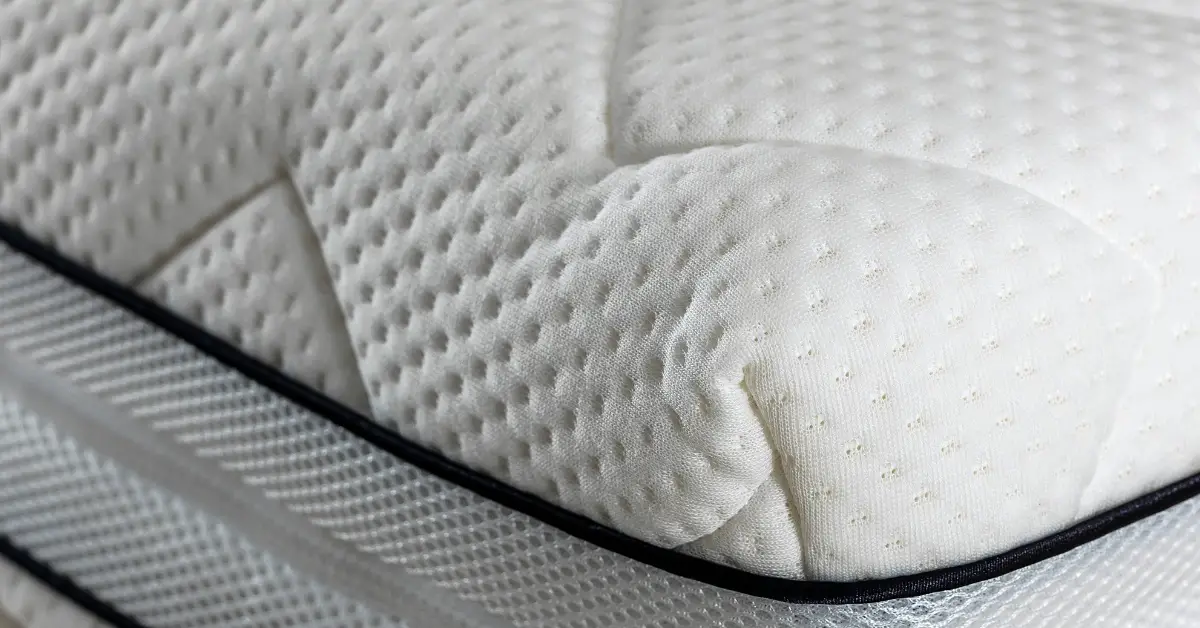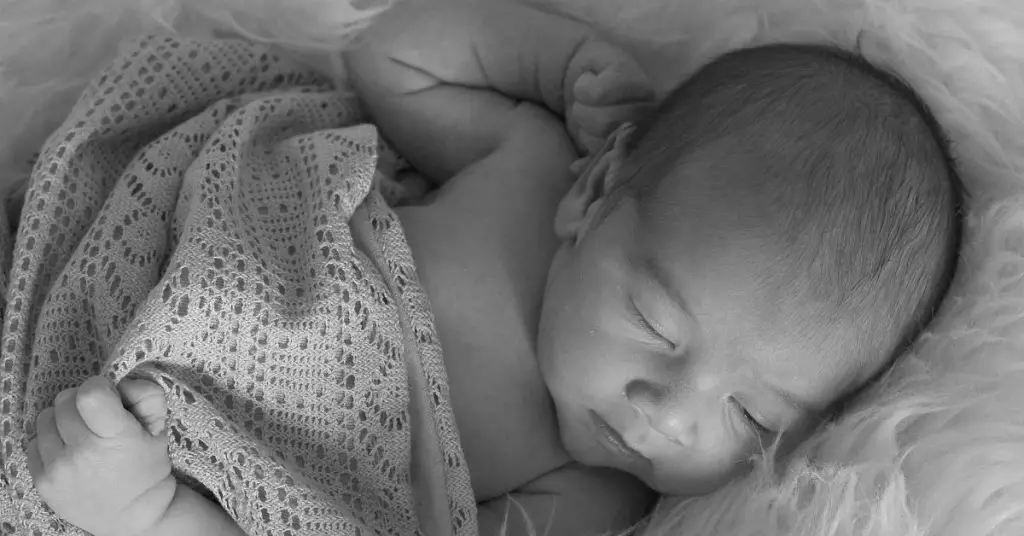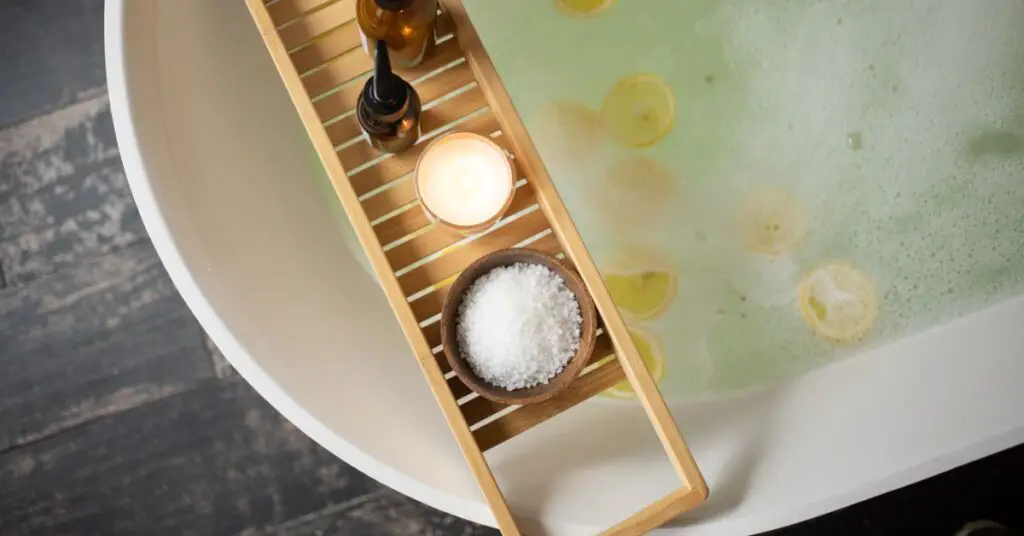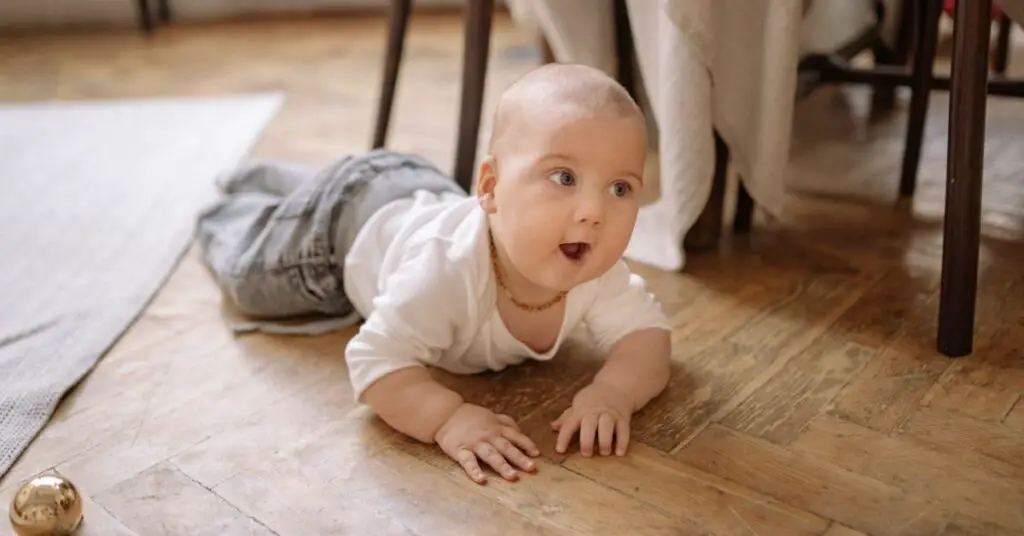Are you concerned about mold on your baby’s crib mattress? Find out how to clean mold off a crib mattress in this complete guide.
The products mentioned on this page were independently selected by Babycious editors. As an Amazon Associate, Babycious may earn a commission from qualifying purchases.

Discovering spots of mold on your baby’s crib mattress can be alarming as mold can be a serious problem, especially for babies and young children. Mold doesn’t necessarily mean that your home is not clean enough, it can have many causes that range from a humidity issue to a forgotten milk spill.
If your crib mattress has been affected by mold, don’t worry – we have the definitive guide on how to clean mold off a crib mattress! In this guide, we will walk you through the steps that you need to take to get rid of that mold and restore your mattress to its former glory. We’ll also discuss some of the dangers of mold exposure and how to prevent it from happening in the future.
Assessing the Mold on Your Crib Mattress
Before proceeding to the cleaning and disinfection of your crib mattress, it’s important to assess the extent of the mold problem. This will help you determine the best course of action to take and whether you need to replace the mattress entirely.
If you have discovered the mold spots in the early stages, you may be able to clean them off without too much difficulty because the spots will likely be superficial. However, if the mold has had time to spread and is covering a larger area of the mattress, it may be best to replace it entirely.
Replacing the crib mattress will be necessary if the mold has built up through the layers of the mattress and has reached the inner filling. If this is the case, then it will be impossible to clean the mold off completely and it could pose a serious health risk to your baby. If you’re not sure whether the mold on your mattress is superficial or has reached the inner filling, it’s always best to err on the side of caution and replace it.
What Does Mold on A Crib Mattress Look Like?
Mold is a type of fungus that thrives in damp, humid environments and can spread quickly. Mold reproduces by releasing spores into the air which can then land on surfaces and start to grow.
Several types of mold can affect a crib mattress, and each one looks a little bit different. Mold can appear as black, green, or white spots on the surface of the mattress and is often fuzzy or slimy to the touch. Here are some of the most common types of mold that you might find on a crib mattress:
- Cladosporium: This type of mold is typically brown or olive green, and it can be found in both indoor and outdoor environments. You will be able to clean small spots of it if discovered early but if the damage is extensive, you will need to replace the mattress.
- Penicillium: This mold is usually blue-green in color and has a velvety-like texture. This type of mold spreads fast and is often found on carpets, mattresses, and other surfaces.
- Trichoderma: This mold is usually white-green colored and has a hairy texture and it is usually non-pathogenic. It often appears in fabrics that have been exposed to excessive moisture.
If you see any of these signs on your crib mattress, it’s time to take action. It can also mean that other areas in the room are affected by mold as well, so make sure to check for mold in other places such as the walls, carpet, and behind furniture.
Related: Best Mini Crib Mattress – 2024 Buying Guide
What Causes Mold to Grow on A Crib Mattress?
Mold growth on a crib mattress can have various causes. It is important to identify the source of the mold growth to fix the cause of the problem and prevent it from happening again in the future.
One of the most common causes of mold growth on a crib mattress is leaks or spills that have not been cleaned up properly and seeped through the mattress. It could be some spit-up or a milk spill or even a diaper leak. If a liquid is left on the surface of the mattress for too long, it can create the perfect environment for mold to grow.
Another common cause for mold growth is high humidity in the room where the crib is located. If the room is not well ventilated, this can create condensation on the surface of the mattress which can lead to mold growth. If this is your case, make sure to ventilate the room more often, or use a dehumidifier that will help you lower the humidity in your baby’s room most effectively.
You should also check for any leaks in your home as these can also cause mold to grow on the crib mattress and other different areas. If you identify any leaks, make sure to fix them right away to prevent any further mold growth.
Risks of Sleeping on A Moldy Crib Mattress
If you see signs of any type of mold on your crib mattress, it’s important to take action immediately to limit your baby’s exposure to mold spores.
Some types of mold are non-pathogenic and pose no risk to human health, while others can cause serious respiratory problems, skin irritation, and other health concerns. It’s important to identify the type of mold on your child’s mattress to see if you can clean it off or if you should chuck it.
Even if mold is not toxic in itself, it could release toxins that may harm your baby if they were to ingest it, touch it, or breathe it in. In some cases, it can also cause an allergic reaction in children who are sensitive to mold spores. If you think your baby has been exposed to mold for a while, it’s important to check with your pediatrician to see if they are displaying any symptoms of mold exposure.
How to Clean Mold Off a Crib Mattress?
Once you have assessed the extent of the mold problem on your crib mattress, it’s time to start cleaning! If the mold is only superficial, you may be able to clean it off with some simple household cleaners. Here are the steps that you need to take to clean mold off a crib mattress:
Step #1: Spot Clean the Surface of The Crib Mattress
Start by removing all bedding from your crib mattress, and taking it to a well-ventilated area where you can clean it up. Ideally, you should take it outside to clean it as mold spores can quickly spread indoors, and use a face mask to protect yourself from inhaling the released spores.
The first step is spot cleaning the moldy areas with a clean dry cloth. If the mold is widespread, you may need to use a soft brush to help loosen it up. You can also vacuum the moldy areas to limit the spreading of the spores in your home.
Step #2: Use a Cleaner Appropriate for The Fabric of Your Mattress
Once you have spot cleaned the moldy areas using a dry cloth or dry soft brush, and hoovered the mattress, it’s time to use an appropriate cleaner that will disinfect and kill the mold on your crib mattress. When using wet cleaning products, you will need to be careful not to soak the mattress as it could damage the inner layers. Here are the most effective cleaning products you can use:
- Bleach: This is the most effective way of removing mold from a crib mattress. This method will work best if the outer layer of your mattress is made of white cotton. Before using bleach (or any bleaching agents) on your crib mattress, make sure to check the mattress label as some manufacturers advise against bleaching their product. You can use a diluted bleach solution to kill mold on your mattress. Simply mix one cup of bleach with three cups of water, and rub it into the moldy areas using a sponge or a cloth.
- White vinegar: Using white vinegar is a great non-chemical way to get rid of mold spots on your mattress. Work the white vinegar into the mattress using a clean cloth, or use a spray bottle to spray vinegar on the surface of the mattress. You can also use a mixture of vinegar and lemon for added effectiveness of disinfection.
- Rubbing alcohol: This is a great way to disinfect and kill mold on your mattress. Apply a diluted mixture of rubbing alcohol and warm water in equal parts directly to the moldy areas and scrub the mold stains in circular motions.
Step #3: Air the Crib Mattress out In the Sun
After thoroughly cleaning your crib mattress using one of the cleaning agents shown in the previous step, place the mattress out in direct sunlight to air dry completely. If possible, leave it out in the sun for several hours to make sure that all the moisture has evaporated and mold spores have been killed.
You can then go over the mattress again with the hoover attachment to finish off the cleaning process.
Step #4: Repeat the Process if Necessary or Seek a Professional Cleaning Service
In some cases, you may need to repeat the cleaning process a few times to get rid of stubborn mold stains. If the mold problem on your crib mattress is severe, it’s best to seek professional cleaning services.
Preventing Mold from Coming Back to Your Crib Mattress
Once you have successfully removed all mold from your crib mattress, it’s important to take measures to prevent it from coming back. Here are some tips that you can follow:
- Make sure that your nursery is well ventilated, and open windows to air the room out on a daily basis.
- If you live in a humid area, keep the humidity levels in your home low by using a dehumidifier, especially in the nursery.
- Use a waterproof mattress protector to keep liquids from seeping into the mattress and creating a conducive environment for mold growth.
- Wash bedding, including the mattress protector, in hot water regularly.
- Keep the crib mattress off the floor to allow for proper airflow under the mattress.
- Make sure to clean up any spills on the mattress immediately, and spot clean moldy areas as soon as you notice them.
Read Also: The Best Crib Mattress Under $200
Bottom Line
Mold on a crib mattress is not only unsightly, but it can also be dangerous for your baby. It’s important to clean mold off a crib mattress as soon as you notice it and to take measures to prevent it from coming back.
The best way to clean mold off a crib mattress is to use a combination of bleach and water, rubbing alcohol, or white vinegar. Be sure to air the mattress out in the sun to kill all mold spores, and wash bedding in hot water regularly. If the mold is already spread out widely on the crib mattress, it might be time to invest in a new one.
The purpose of this article is informative and educational only. It’s not a substitute for medical consultation or medical care. We do not accept any responsibility for any liability, loss, or risk, personal or otherwise, incurred as a consequence, directly or indirectly, from any information or advice contained here. Babycious may earn compensation from affiliate links in this content.



